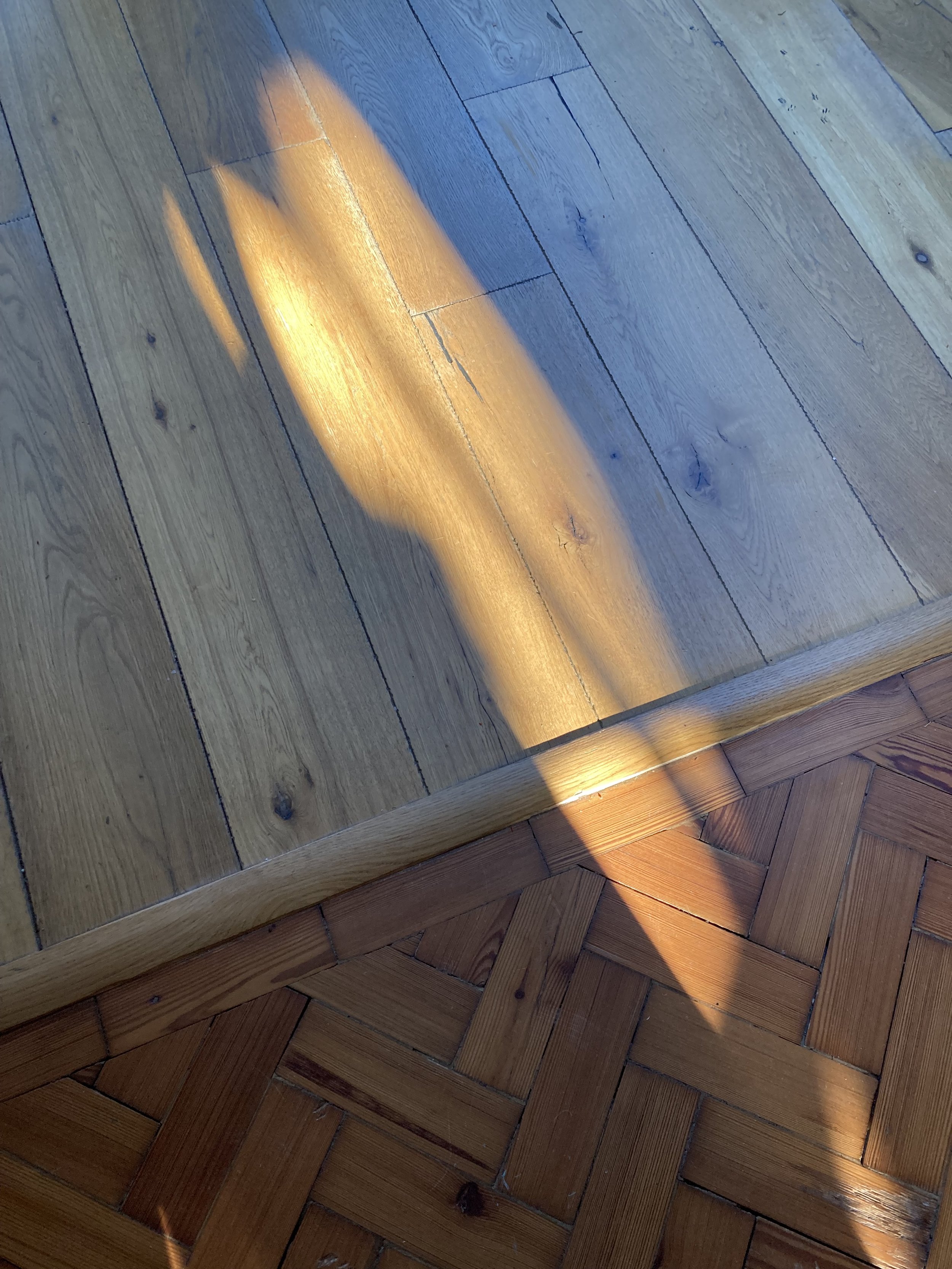This autumn I made a particular effort to notice how the light was changing in my immediate environment. I watched each day, around noon, to see how and where the sunlight peeked over my roof and into the back garden. I was fascinated to see how different it was from the height of summer when the light would sweep all around from east to west, maintaining a permanent presence in our wee urban space. I felt a sad anticipation as I watched the shaft of light work its way up the back fence, the strange trapezoid shape getting smaller and smaller, until one day it was no longer there. Our garden will be dark now for months. But, to my surprise, I also realised that there is light in the front of our house that was not there before. As the sun makes its way lower in the sky, the light pierces deeper into our front room, so that I can sit on the floor basking in the warmth at lunchtime. I hadn’t noticed this properly before, focused as I was on the loss of light elsewhere.
After a few weeks of enjoying this new light I realised that this too had its own tideline, as the sun skirted the roofline of the houses across the road. It wouldn’t be long before its arc failed to clear the tiles and darkness would follow into the house. Returning from a walk one very crisp, sunny day in early December, I noticed, as I unlocked the front door, that the shaft of light barely grazed the tops of the windows in the living room. I checked the time – almost noon – and felt sure that this could be the moment of the last light. When I came inside, this longest sunray had fallen unobstructed all the way through the house, into the kitchen at the back, lighting up a distinct strip on the far wall. Within minutes this had shifted and the light was disturbed over furniture and by doorways. When I showed my partner a photograph of the light, later that day, he remarked that it was our ‘homehenge’ and it seemed like the perfect description. I felt like a secret of the house, and of the light, had been revealed; I knew the fullest extent of its reach and when it was likely to happen again. Next year I will be waiting, anticipating the light in my homehenge, similarly to the way we look to Stonehenge on the solstices or the live-feed from Newgrange in midwinter.
After many years of using the seasonal changes as times of reflection, and understanding fully what that means to me on a personal level, I feel like I have a better connection to that large-scale rhythm. But, as my observations of the light in my garden and front room has highlighted – I am not really paying attention on a smaller scale. Do I know the exact date the light disappears from my garden each year? Do I know when it will return? Where is the furthest point of light in the kitchen, and where does the sun return on the other side of the solstice? Something about all this feel important. Knowing how and when our environments alter, the ways this might bring us moments of joy or quiet poignancy.
They also feel like they could be personal marker points along the way. Stepping stones between the big moments like the changes of the seasons, birthdays, anniversaries etc. I’d love to see people choosing their own timetables of reflection, review and planning. Not hitching a ride on the dominant culture’s inflexible framework of things like financial quarters. I believe in pausing regularly to check in, to ask how things are going, to see if things should be adapted in light of what your needs are at that point. Not waiting until the end of a piece of work or a project, not thinking there has to be a big enough reason to do it, but trusting that noticing and asking questions as we go along helps us stay aligned to the work we most want to do.
So in the weeks ahead, if the solstice or new year don’t feel like good places for you to reflect and review, ask yourself – what are the small points in the year that work for me as a place to pause? What internal or external rhythms can I acknowledge and hang my own practice of reflection onto? What things in the world do I want to pay attention to, in order to pay attention to myself?
If you think you’d like to explore ways of reflecting, reviewing and planning that suit you and your natural disposition within your work, do keep an eye out after Christmas for my winter offering – where we’ll explore different options for building a practice of reflection. Or, if you’d like to work 1:1 with me on this, I’m always excited to share space and explore the deeper intricacies of someone’s creative practice. I’d love to hear from you, so do get in touch.
